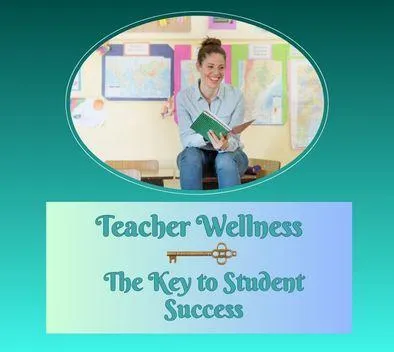
New Blog Post
Why Teacher Wellness Is the Key to Student Success
Teaching has always been more than a profession—it’s a calling. Yet, many teachers carry heavy stress loads that directly impact their well-being and the success of their students. When educators thrive, their classrooms thrive. When they are burned out, the learning atmosphere suffers.
Teacher Wellness and the Learning Environment
Teacher wellness is directly tied to teacher retention and classroom climate. Studies have shown that stressed or burned-out teachers are more likely to leave the profession, while schools that prioritize wellness see greater teacher stability and stronger relationships with students (Skaalvik & Skaalvik, 2018). Retained teachers provide consistent routines and safe, trusting environments that help students focus on learning instead of adapting to frequent teacher turnover.
Why Students Need Safe, Trusting Environments
Neuroscience tells us that the brain learns best in safe, supportive conditions. When students feel unsafe, stressed, or disconnected, their amygdala—the part of the brain responsible for processing emotions—can hijack their ability to focus and retain information (Immordino-Yang & Damasio, 2007). In contrast, safe and trusting classroom environments lower stress responses, open the prefrontal cortex for problem solving, and support deeper learning (Cozolino, 2013). Teachers play a vital role in creating this emotional climate. Their wellness influences whether classrooms feel calm and inviting or tense and unpredictable.
The Ripple Effect of Teacher Stress
When teachers experience high stress, students often mirror that stress. Jennings and Greenberg (2009) found that teacher social-emotional competence predicts the quality of teacher-student relationships, classroom management, and even student academic performance. Simply put: teachers who feel supported and balanced are better equipped to model patience, empathy, and problem-solving skills that students absorb and carry into their own learning.
Strategies for Teachers to Regulate Stress and Anxiety
Creating a safe, trusting classroom begins with teachers regulating their own stress levels. Here are three simple, research-based strategies:
Mindful Breathing and Grounding
Even two minutes of slow, intentional breathing can calm the nervous system, lower cortisol levels, and restore focus (Zeidan et al., 2010). Teachers who practice mindful breathing before class transitions or after challenging moments model self-regulation while resetting the classroom climate.Micro-Breaks and Movement
Short breaks that include stretching, a quick walk, or guided movement help release tension and boost mood-regulating neurotransmitters like dopamine and serotonin (Ratey, 2008). Inviting students to join in these quick movement breaks not only reduces teacher stress but also fosters connection and energy in the classroom.Put It on the Shelf
Teachers can practice mentally “placing” a stressful thought, problem, or worry on a shelf—visualizing setting it aside until later. This technique allows the brain to shift from emotional rumination to focused teaching in the present moment. Later, during a calm and quiet time, the teacher can “take the problem off the shelf” and reflect on it with fresh perspective. This intentional pause reduces stress, creates mental clarity, and opens space for more creative problem-solving (Neff, 2011).
The Bottom Line
Teacher wellness is not a luxury—it is a necessity for student success. Brain science confirms that students learn best in classrooms that feel safe and trusting, and that begins with teachers who are emotionally regulated and supported. By investing in teacher wellness, schools create the conditions for students to thrive both academically and emotionally.
